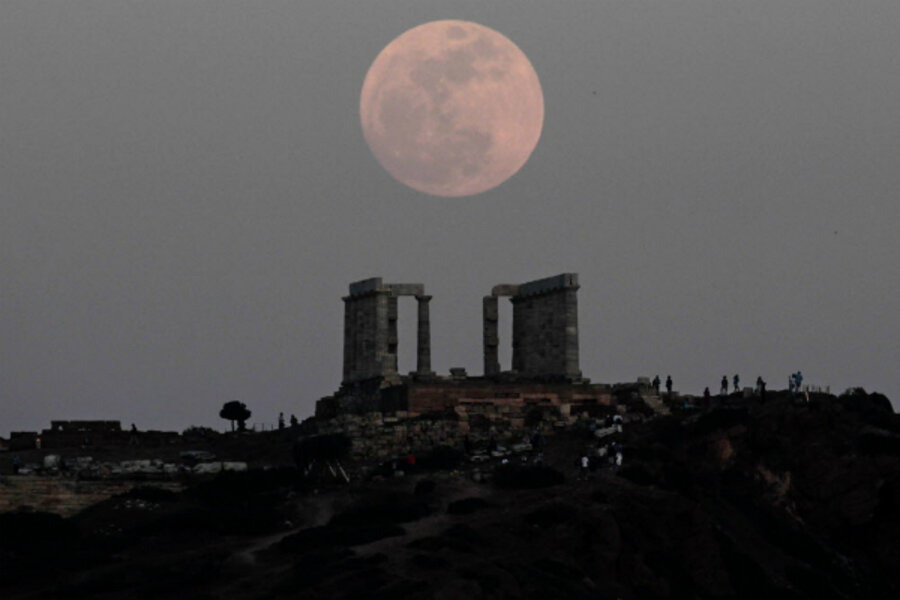Supermoon: Will it be 5 times larger? Not exactly. Still, cue 'Moonstruck.'
Loading...
It's bigger than a bleached beach ball, able to orbit Earth in 27.3 days – it's supermoon! And it's coming to a night sky near you on June 23.
It will be bright, beautiful, but definitely not "five times bigger" than usual, as some widely circulating web alerts suggest. More like 12 percent larger than average – a difference too small to detect by eye without help from a camera.
Take a picture of Sunday's full moon high in the sky, then take a picture of another full moon of your choosing – at roughly the height above the horizon using the same magnification. Set the two white disks side by side, and the difference is easier to see – but nowhere near a five-fold difference.
Still, what can be finer on an early summer's night (or winter's night in the Southern Hemisphere) than sitting on the front porch or back deck and enjoying Earth's companion, weather willing?
In fact, it's a two-fer. The first full moon in June is called a strawberry moon, marking the harvest of strawberries after their short growing season ends, according to that annual compendium of weather prognostications, recipes, and lore, the Old Farmer's Almanac.
Supermoons occur once a year. This month's super-strawberry moon will be (slightly) larger and brighter than others because its full-moon phase comes as the moon makes its closest approach to Earth.
The moon's orbit around the third rock from the sun traces an elliptical path. At closest approach, or perigee, the moon swings to within 362,570 kilometers (224,793 miles) of Earth, while its most-distant point, or apogee is 405,410 km. But those are averages.
Sunday night, the moon's perigee will come within 356,989 km of Earth, about 2 percent closer than average. And the moon reaches full status about 20 minutes after perigee.
As Phil Plait, an astronomer who pens the "Bad Astronomy" blog over at Slate.com puts it: "That's pretty nifty timing."
As with any full moon, Sunday's supermoon will appear unusually large when it's close to the horizon. In one sense, that makes any full moon super to view. But don't be fooled. As the late, great 18-century German philosopher Immanuel Kant noted: "The astronomer cannot prevent himself from seeing the moon larger at its rising than some time afterwards, although he is not deceived by this illusion."
If you miss this supermoon, it's not too early to mark your calendar for the next one. It should show up Aug. 10, 2014. And it's free!








